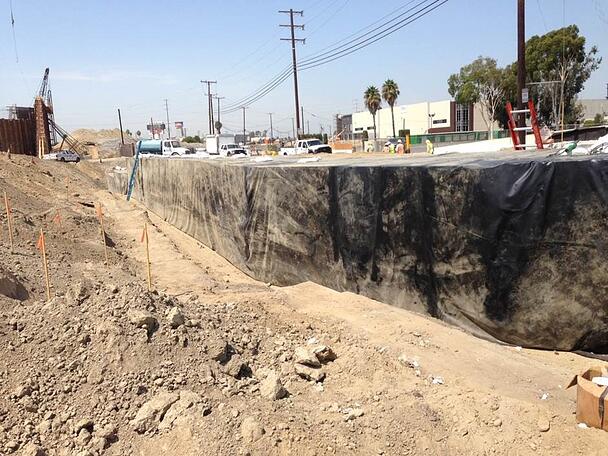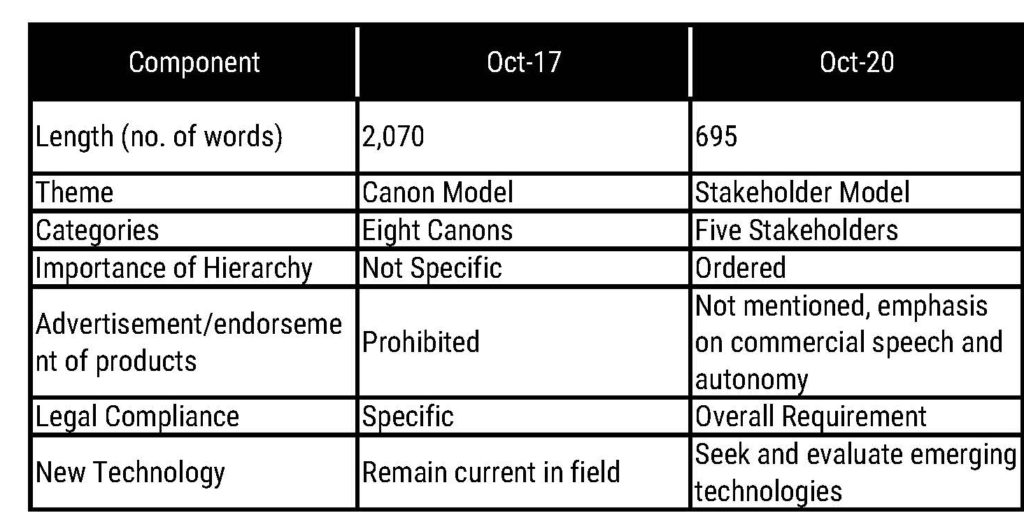By Felon Wilson, Geomembrane Consultant, Seaman Corp.

The American Society of Civil Engineers (ASCE) first adopted a Code of Ethics in 1914 for the purpose of creating a model of professional conduct for its members. The last major revision was in 1974, with Canon 8 added in 2017. After a multiyear team effort, a new version was released in October 2020. The theme of the code is revised to 21st-century standards and is worthy of review by all civil engineers.
Several articles have been published in Civil Engineering magazine, ASCE’s primary member periodical, since the new code was enacted to provide clarity to the membership. Here are some of the highlights of the previous vs. current code:

- Length: The code sought to be clear, to be concise and to incorporate modern language.
- Theme: Merriam-Webster.com describes the definition of a “canon” as an accepted principle or rule, as a criterion or standard of judgment. The new code establishes duties that are outlined to specific stakeholders. The code is meant to be more intuitive for resolution of ethical concerns.
- Categories: The number of categories was reduced from eight to five but still covered all the topics in the previous code.
- Hierarchy: The 1974 code provided no level of hierarchy or ordering of importance. With subsequent revisions, most believe it lacked order and might cause conflicts in dominance of duties. The new code is ordered based on level of duty.
- Advertising/endorsement of products: Canon 5 of the previous code was the lengthiest and outlined ways engineers should build their professional reputations on the merit of their services and not compete unfairly with others. It devoted 200 words discussing “permissible” ways for engineers to advertise and take credit for their work. It specifically said engineers could not use their names in “public endorsement(s) of proprietary products.” In keeping with the spirit of the 2020 code, this prohibition was eliminated in favor of a more modern ethical philosophy that places greater value on commercial speech and autonomy instead of strict limits on advertising or product endorsements.
- Legal compliance: An addition to the code can be found under “Profession” regarding legal compliance. It is broadly stated as “compliance with all legal requirements in the jurisdiction of practice.” Previously, legal compliance was covered in several canons and was specific about types of unlawful acts.
- New technologies: The code reflects advancement of technology and charges engineers to embrace these new technologies while using good judgment in their application. Noteworthy is the fact that this section is contained in Stakeholder No. 1 (Society).
As a design engineer, what do these changes to the ASCE Code of Ethics mean to me? There are many applicable sections but here are four areas to note:
- The established hierarchy provides clarity in responsibility. For instance, ethical treatment of Stakeholder No. 1 takes precedence over Stakeholder No. 2. ASCE gives an example of Public Safety (falling under Stakeholder No. 1, Society), which would supersede a client request (falling under Stakeholder No. 4, Clients and Employers). It establishes an order of responsibility.
- Canon 8, added in 2017, was focused on diversity, equity and inclusion. The 2020 Code of Ethics elevates these concerns to the level of Society (Stakeholder No. 1) and, thus, intends for these concerns to be in the top layer of owed duty. Additional elements are found in Stakeholder No. 5, Peers. It elevates the role to shape other’s lives over more pragmatic goals.
- The code’s language on truthfulness, proper credit and fair competition does not specifically mention advertising but rather establishes a virtue than does not prohibit truthful endorsement of products, if the engineer determines it is warranted. This can be interpreted to mean the endorsement of commercial products is ethical and can be conducted. Engineers can endorse and recommend specific commercial products without violation of the ASCE Code of Ethics.
- Rapid advancement in technology in the last half century is expected to continue, even accelerate. “Engineers (should) consider the capabilities, limitations and implications of current and emerging technologies when part of their work”. Encourage the use of new technologies, using good engineering judgment.
The new code seeks to organize and clarify the order of many duties while being responsive to a 21st-century, value-based culture. A review of the document is important for all civil engineers.
To review the entire 2020 ASCE Code of Ethics, click here.
References
Hoke, Tara, “Part 1 of 2: ASCE’s new code of ethics explained,” Civil Engineering, December 2020.
Hoke, Tara, “Part 2 of 2: ASCE’s new code of Ethics explained,” Civil Engineering, January/February 2021.
Fogelson, Matt, “A new compass,” Civil Engineering, January/February 2021.
This article originally appeared on the XR Geomembranes Blog, https://www.xrgeomembranes.com/blog.
 TEXTILES.ORG
TEXTILES.ORG


